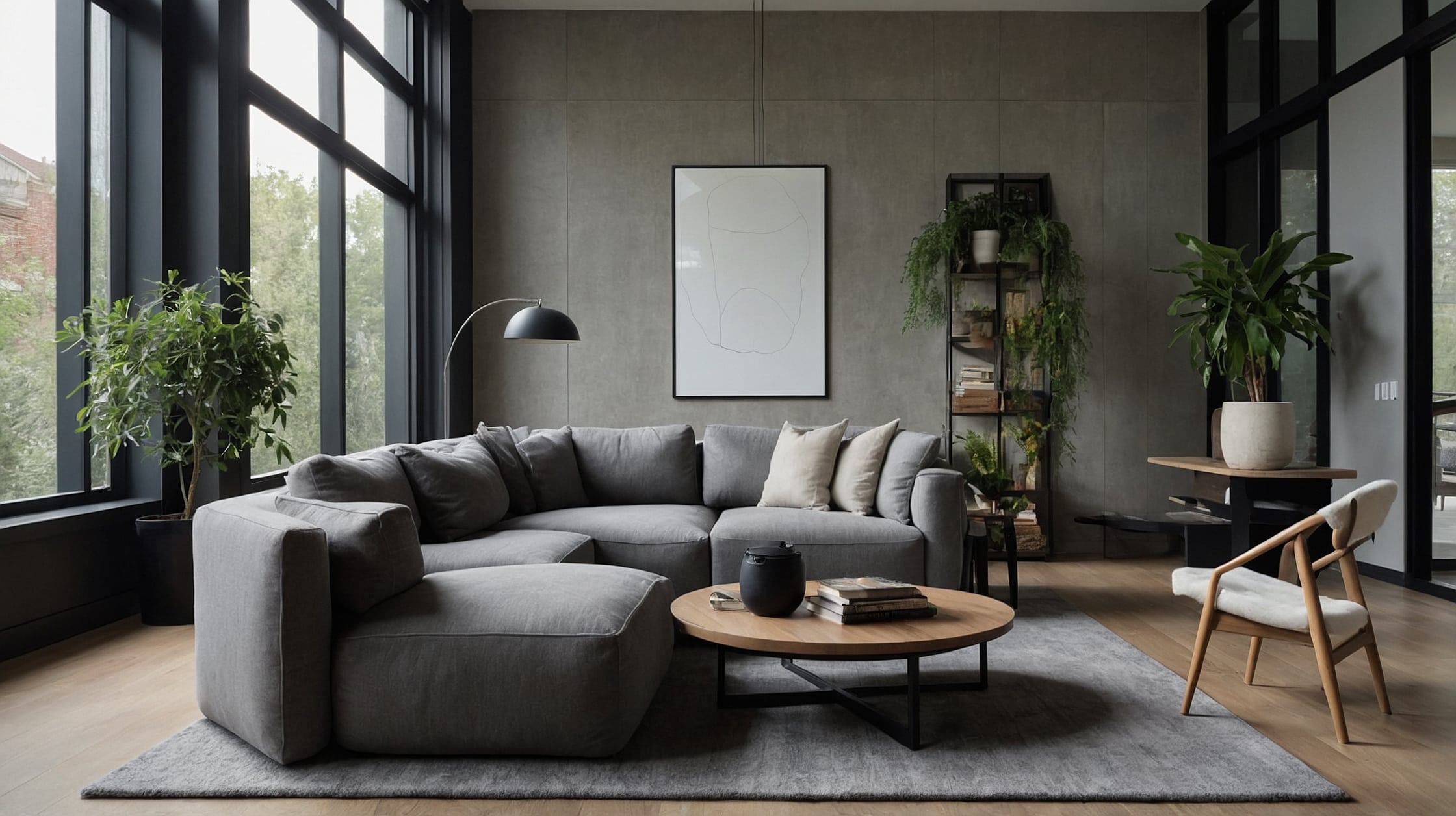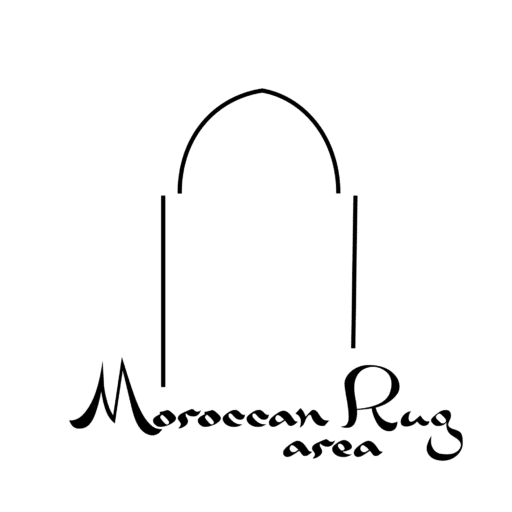Why Use Custom Rug Labels?
Custom rug labels serve multiple important purposes. They help identify the creator, enhancing both the credibility and authenticity of handmade rugs. These labels also provide essential information about the rug, such as material composition, care instructions, and even origin.
Beyond just utility, custom labels add a personal touch to the handcrafted item. They often reflect the artisan‘s brand, turning a generic piece into a unique creation. By showing off individual craftsmanship, these labels can elevate the perceived value of the rug.
Another substantial benefit involves legal protection. Custom labels, particularly those carrying a trademark or logo, can protect an artisan’s intellectual property. This is crucial in a market where imitation can be rampant. Using a distinct label makes it easier to distinguish original items from knock-offs.
For those selling their rugs, labels serve as an effective marketing tool. A well-designed label can leave a lasting impression on customers, making them more likely to remember and recommend the brand. These labels can include contact information or a website link, encouraging repeat business and fostering customer loyalty.
Eco-conscious buyers appreciate transparency, and labels enhance this by disclosing materials and production methods. Information about sustainable practices or eco-friendly materials is often included on these labels, appealing to environmentally conscious consumers.
Labels are not just for external appeal; they fulfill practical purposes too. For instance, indicating care instructions can prolong the lifespan of a rug by ensuring proper maintenance. This adds value for customers who are keen to preserve their purchases for years.
In retail environments, custom labels offer advantages for stock management and display. Store owners can quickly identify information about each rug without unrolling it entirely. This makes inventory checks faster and reduces handling wear on the products.
Finally, custom labels contribute to storytelling. Artisans often share snippets of their journey or inspiration through these labels, creating an emotional connection with buyers. This storytelling aspect adds depth to the purchase experience, turning a simple transaction into a meaningful acquisition.
To sum up, custom rug labels do far more than merely mark ownership. They are vital tools for branding, customer engagement, and legal protection. They offer practical benefits that enhance both the rug’s value and its longevity. Ultimately, these labels marry form with function, providing a finishing touch that enriches both the creator and the consumer.
Benefits of Personalization
Personalizing rug labels offers numerous advantages. First, it distinguishes the rug from mass-produced alternatives. Custom labels can showcase the artisan’s name or brand, adding a unique touch that attracts discerning buyers.
Personalized labels can also communicate important information. Individuals can include details about the rug’s materials, origin, and care instructions. This transparency builds trust with customers, making them feel confident in their purchase.
Another advantage is increased brand recognition. Custom labels act as miniature billboards, constantly promoting the brand every time someone sees the rug. It’s an effective way to increase visibility without additional marketing costs.
Custom labels can cater to niche markets. For example, labels highlighting eco-friendly materials or sustainable practices resonate with environmentally conscious consumers. This targeted approach can differentiate a brand in a crowded market.
Personalization also offers a way to tell a story. Artisans can share a snippet of their journey or inspiration behind the rug. This emotional connection can turn a simple purchase into a meaningful experience for the customer.
By using custom labels, artisans can also secure legal protection. Including a trademark or logo helps protect their intellectual property. This minimizes the risk of imitation and helps maintain the integrity of their work.
Custom rug labels can even increase the perceived value of the product. A well-designed label indicates attention to detail and quality craftsmanship. This perception can justify a higher price point, benefiting the artisan financially.
These labels are practical too. Including care instructions ensures that customers know how to maintain their rug, prolonging its lifespan. Happy customers are more likely to become repeat buyers and brand advocates.
In retail settings, custom labels improve inventory management. Store staff can quickly identify rugs without unrolling them, making stock checks more efficient. This reduces handling wear on the products, keeping them in better condition for potential buyers.
Custom rug labels also contribute to customer loyalty. A memorable label encourages customers to remember and recommend the brand. This word-of-mouth marketing is invaluable for growing a small business.
In summary, personalizing rug labels provides significant benefits. It enhances brand recognition, communicates crucial information, and builds an emotional connection with customers. It protects intellectual property, increases perceived value, and improves practical aspects like inventory management. Personalized labels are a powerful tool that adds both form and function to handmade rugs.
Branding and Marketing Advantages

Custom rug labels offer significant branding and marketing benefits for artisans. First, these labels serve as a form of consistent branding. A well-designed label featuring the brand’s logo and colors can help establish a recognizable identity. This makes it easier for customers to remember the brand, increasing the likelihood of repeat business.
Labels also act as portable advertisements. Every time someone sees the rug, they see the label. This continuous exposure helps build brand awareness without extra marketing costs. It’s like having a small billboard that travels with the product.
Including contact information on the label can drive traffic to the artisan’s website or social media profiles. This gives potential customers an easy way to learn more about other available products. It’s an effective strategy for converting interest into sales.
Custom rug labels can help convey value. A high-quality, professional label suggests a high-quality product. Customers are often willing to pay more for items that appear to be premium products. Thus, well-made labels can justify a higher price point, boosting revenue.
Labels add credibility to the product. Providing details about materials, craftsmanship, and care instructions enhances transparency. This builds trust with customers, who appreciate knowing they’re purchasing something made with care and integrity.
Additionally, having a unique label helps differentiate the product in a crowded marketplace. In a sea of similar items, a standout label grabs attention. This differentiation is crucial for artisans competing against mass-produced goods and big brands.
Personalizing rug labels also offers opportunities for creative storytelling. Sharing a brief history or story about the inspiration behind the rug can create an emotional connection with buyers. This unique story sets the product apart and can make it more memorable.
Social proof is another marketing advantage. When customers share photos of their rugs on social media, the custom label is often visible. This acts as an endorsement, encouraging others to check out the brand.
Custom rug labels are also useful for collaborations. Artisans working with designers or other brands can feature collaboration details on the label. This helps cross-promote both parties involved.
Finally, labels can include call-to-action prompts like hashtags or QR codes. These elements encourage customer engagement and provide measurable data on marketing effectiveness.
In summary, custom rug labels do more than just identify a product. They enhance branding, offer free advertising, convey value, build trust, differentiate in a crowded market, tell stories, provide social proof, assist in collaborations, and drive customer engagement.
Designing Custom Rug Labels
Designing custom rug labels requires careful consideration of several elements. The process starts with selecting the right materials. Labels can be made from woven fabric, satin, or even leather. Each material offers a different look and feel. Woven labels provide a classic and durable finish. Satin labels offer a luxurious touch, while leather suggests a high-end, artisanal product.
Next, artisans must determine the size and shape of the label. Labels come in various sizes, from small and discreet to larger, more visible options. The shape can also vary—rectangular, square, circular, or custom shapes to fit the brand’s unique style.
Choosing the right colors is essential. Colors should align with the brand’s palette. High contrast between text and background ensures readability. Bright colors can attract attention, while muted tones may convey elegance.
Typography plays a crucial role in design. Fonts should be clear and easy to read. The style of the typeface should align with the brand’s identity—modern, classic, playful, or elegant. Combining different font styles can create visual interest but should be done sparingly.
Incorporating the brand logo on the label is non-negotiable. The logo enhances brand recognition and makes the product easily identifiable. If space allows, it’s also beneficial to include a tagline or slogan that reinforces the brand message.
Additional information such as care instructions, material details, and origin can add value to the label. Customers appreciate knowing how to take care of their rugs and what they are made of. Including this information can increase customer trust and satisfaction.
For a personal touch, consider adding an element of storytelling. A brief line about the artisan’s inspiration or the rug-making process can create an emotional connection with buyers.
Including contact information can drive traffic to an artisan’s website or social media profiles. A website URL or social media handle makes it easy for customers to find more products or get in touch for custom orders.
Lastly, think about how these labels will be attached to the rugs. Options include sewing them in, using adhesive backing, or attaching them with small metal tags. The method should be secure yet easy for artisans to apply without damaging their work.
Designing custom rug labels involves multiple choices that reflect the brand’s personality and values. Thoughtful design can enhance both the aesthetic appeal and marketing effectiveness of these labels, helping artisans stand out in a competitive market.
Choosing the Right Material

Selecting the appropriate material for custom Rug Labels is essential. Each material type offers distinct advantages, impacting both aesthetics and durability. Woven fabric labels are a popular choice. They provide a classic look, feel durable, and can withstand repeated washing without fraying or fading.
Satin labels are another excellent option. These labels feel smooth and luxurious to the touch. Their shiny finish can give an elegant impression and attract buyers who appreciate finer details. Satin is best for high-end or delicate rugs where sophistication is paramount.
Leather labels, on the other hand, bring a sense of ruggedness and artisanal craftsmanship. They are perfect for rustic or handwoven rugs that need to project an earthy, handcrafted image. Leather labels are highly durable and add a unique character to each piece.
Consider the environmental impact when selecting materials. Eco-friendly options such as organic cotton or recycled polyester are increasingly available. These materials appeal to environmentally conscious consumers and reflect a commitment to sustainable practices.
Durability should not be overlooked. Rug Labels must endure the unique wear and tear associated with floor coverings. The fabric type must remain intact and legible through daily use, cleaning sessions, and even exposure to sunlight.
Thickness matters as well. A thick label may prove uncomfortable if placed in a spot that touches the floor frequently. Conversely, a label too thin might not project the needed sense of quality and may wear out quickly.
Colorfastness is another critical factor. The chosen material must hold its color, ensuring that the design remains vibrant throughout the rug’s life span. This is especially vital for labels that undergo high friction or regular cleaning.
Some artisans may prefer iron-on labels for their ease of application. These labels come with heat-activated adhesive, making them simple to attach without sewing skills. However, the heat application process must be carefully managed to avoid damaging delicate materials.
Another alternative is adhesive-backed labels. While quick to apply, these might not offer the same longevity as sewn-in options. For high-quality rugs, sticking to more permanent attachment methods ensures the label remains a long-term part of the piece.
Material choice also impacts production time and costs. Some materials may be readily available and cost-effective, while others might require special ordering or come at a premium price. Balancing cost with quality ensures good returns without compromising brand integrity.
In summary, choosing the right material for rug labels involves weighing aesthetics, durability, environmental concerns, and cost-efficiency. A well-chosen label material enhances the rug’s overall value, appealing to discerning customers who appreciate attention to detail.
Creating a Unique Design
Creating a unique design for Rug Labels requires careful consideration. The design should reflect the brand’s identity while resonating with target customers. Simplicity often wins; a clean, easily readable label is more effective than a cluttered one.
First, consider the logo. The logo serves as the centerpiece of the design. It should be clear and distinguishable even when scaled down. A well-designed logo adds a professional touch and helps in building brand recognition.
Next, select an appropriate font style. Fonts convey emotion and tone. Serif fonts, for example, evoke tradition and reliability. Sans-serif fonts give a modern, sleek feel. Handwritten fonts suggest a personal, artisanal touch. Choose a font that aligns with the brand’s message and product style.
Color is also crucial in label design. Bright, bold colors can make a label stand out but may not suit all styles of rugs. Neutral tones are versatile and tend to blend well with various designs. However, ensure that the colors used do not clash with the overall aesthetic of the rug.
Incorporate essential information. At a minimum, include the brand name, logo, and website or contact details. This not only provides customers with a way to connect but also builds brand loyalty. Additionally, consider including care instructions if space permits. Clear care guidelines help maintain the rug’s quality and longevity.
Icons and small graphics can enhance a label’s appearance. Icons like washing symbols or eco-certifications add functional value. However, avoid overcrowding the label to maintain legibility.
The shape of the label can also be a distinctive feature. Rectangular labels are common but don’t limit creativity to shapes alone. Circular or oval labels can lend a unique touch if they align with the rug’s design and the brand’s image.
Material finish contributes to the label’s feel. Matte finishes offer a subtle sophistication, while glossy finishes catch the eye with added shine. The choice of finish should complement both the rug material and the overall design aesthetic.
Finally, test different designs before settling on one. Prototyping allows for evaluating how well labels integrate with various rugs. Feedback from friends or customers can provide valuable insights into which design works best.
In conclusion, crafting a unique design for Rug Labels involves considering elements like logos, fonts, colors, and shapes. By focusing on these aspects, brands can create labels that not only look good but also reinforce their identity and attract customers.
Best Companies for Custom Rug Labels
Selecting the best company for custom rug labels is key to ensuring quality and durability. Several top-rated label makers stand out in this specialized field, offering various options that cater to different needs.
Label Weavers is highly regarded for its expertise in producing woven labels. Their products are known for their fine detail and strong material, making them ideal for rugs that require robust labeling. Label Weavers offers customization options like different thread colors and sizes, ensuring the label matches the rug’s aesthetic.
Dutch Label Shop is another popular choice among businesses. They provide both woven and printed labels, catering to a wide range of design preferences. The company boasts user-friendly online tools that simplify the design process. Customers appreciate their fast turnaround and high-quality finish, which adds a professional touch to homemade rugs.
For eco-conscious creators, Clothing Labels 4U stands out. They offer a variety of sustainable labeling options, including organic cotton and recycled materials. This aligns with brands prioritizing environmentally friendly practices. Clothing Labels 4U also provides excellent customer service, guiding clients through every step of the labeling process.
Namensbaender.de caters particularly well to European customers. They offer a vast array of custom labels that can be fully personalized. Their labels are recognized for their durability and vibrant colors. Namensbaender.de’s quick shipping within Europe makes it a convenient option for businesses on the continent.
Another noteworthy company is Stadri Emblems. Known for their detailed custom embroidery, they offer labels that can feature intricate designs and logos with precision. This capability is especially beneficial for brands with complex logos or those that desire high-detail labeling.
Everest Woven Labels also deserves recognition. They specialize in woven labels that can withstand wear and tear, making them suitable for rugs that see a lot of foot traffic. Their high-quality weaving technology ensures clarity and longevity, enhancing the overall appeal of the rug.
When considering customer reviews and recommendations, these companies consistently receive high marks for product quality and service. Online forums and review sites like Trustpilot often highlight their timely delivery and attention to detail, which are crucial factors in choosing a reliable label maker.
In summary, selecting the right company for custom rug labels involves considering various factors such as material quality, customization options, and customer service. Companies like Label Weavers, Dutch Label Shop, Clothing Labels 4U, Namensbaender.de, Stadri Emblems, and Everest Woven Labels offer top-notch products that can elevate a rug’s presentation. Make an informed choice by evaluating these options based on specific needs and preferences.
Top-Rated Label Makers
Label Weavers tops the list for high-quality woven labels. They offer great customization, including various colors and sizes. Their labels are strong and durable, perfect for rugs that need robust tagging.
Dutch Label Shop stands out for both woven and printed options. They have user-friendly online tools to simplify the design process. Their fast turnaround time is a big plus for businesses.
For those concerned with sustainability, Clothing Labels 4U is an excellent option. They provide eco-friendly materials like organic cotton and recycled options. This choice aligns with brands focusing on environmental responsibility.
Namensbaender.de is ideal for European customers. They offer a wide array of personalized labels known for durability and vibrant colors. Quick shipping within Europe makes them even more attractive.
Stadri Emblems excels in detailed custom embroidery. Their labels can feature intricate designs and logos with precision. This is beneficial for brands with complex logos or those needing high-detail labeling.
Everest Woven Labels specializes in labels that withstand wear and tear. Their high-quality weaving technology ensures clarity and longevity. This makes them suitable for rugs that experience heavy foot traffic.
Customization options vary among these top-rated makers. Each company offers unique features that cater to specific needs. It’s important to evaluate which aspects are most crucial for your project.
For instance, Label Weavers and Everest Woven Labels are ideal if durability is your primary concern. Their products are built to last, even under tough conditions. On the other hand, Dutch Label Shop and Stadri Emblems excel in offering detailed, eye-catching designs.
Companies like Clothing Labels 4U are perfect if sustainability is a priority. Their eco-friendly options let brands remain committed to green practices without compromising quality.
When it comes to logistics, Namensbaender.de’s quick shipping and high-quality products make them a favorite among European businesses. This can save time and money, especially for bulk orders.
Customer reviews often highlight these companies’ reliability and quality. Users frequently praise them on platforms like Trustpilot for their attention to detail and prompt service.
In summary, the best custom rug label makers each have unique strengths. Whether it’s durability, design detail, sustainability, or fast shipping, these top-rated companies meet various specific needs effectively. Consider these aspects when choosing a service to add that personal touch to your rug creations.
Customer Reviews and Recommendations

How to Attach Labels to Handmade Rugs
Customer reviews often serve as crucial insights for prospective buyers. Many users highlight the top-rated companies for their quick turnaround times and high-quality materials. Dutch Label Shop frequently receives accolades for its user-friendly online design tools. Similarly, Label Weavers earns praise for the durability of their labels, often mentioned in reviews on Trustpilot.
Furthermore, environmental consciousness is becoming increasingly important. Clothing Labels 4U receives positive feedback for offering eco-friendly options. Customers appreciate their commitment to sustainability without compromising on quality. Reviews for Namensbaender.de often mention their fast shipping within Europe, a significant benefit for businesses operating on tight schedules.
Stadri Emblems stands out for their intricate embroidered labels. Users often note the precision and detail in the designs. Everest Woven Labels also garners positive reviews, particularly for their ability to withstand wear and tear. Users find these highly durable labels ideal for rugs subjected to heavy use.
To attach labels to handmade rugs, one should follow a series of straightforward steps. First, gather essential tools such as a needle, matching thread, scissors, and an iron if adhesive backing is used. It’s crucial to choose a thread that matches the rug to maintain aesthetic consistency.
Prepare the label by ironing it flat if it appears creased. Position the label in a spot where it will be visible yet unobtrusive, typically on the underside of a rug corner. Ensure the label is straight by using a ruler or another straight-edge tool.
Begin sewing by threading the needle and tying a secure knot at the end of the thread. Starting from the underside of the rug, push the needle up through both the rug and the label. Then, pull the thread through until the knot anchors your starting point. Be sure to use small, even stitches around all edges of the label. This guarantees it lays flat and remains securely attached.
For those using adhesive-backed labels, peel off the protective layer to expose the adhesive side. Press the label firmly onto the rug where you want it to be placed. Iron over the label with moderate heat to activate the adhesive for a more secure bond.
Finally, review your work to ensure that the label is properly secured and positioned correctly. This method ensures professional results while maintaining the handmade charm of your rug.
Step-by-Step Instructions
To attach custom rug labels, begin by gathering essential tools: a needle, matching thread, scissors, and an iron if using adhesive-backed labels. Having the right materials ensures a smooth process. Select a thread that matches the rug’s color to maintain aesthetic consistency.
First, prepare the label by ironing it flat to remove any creases. This makes sewing easier and helps the label adhere better. Choose where to place the label; the underside of a corner is usually best. Ensure the label is straight using a ruler or another straight-edge tool.
Next, thread the needle and tie a secure knot at the end of the thread. Start from the underside of the rug, pushing the needle up through both the rug and the label. This method secures your starting point and keeps the knot hidden from view. Pull the thread through, making sure it is taut but not overly tight.
Then, sew small, even stitches around all edges of the label. Small stitches help keep the label flat and prevent it from curling up over time. Maintaining consistency in your stitching ensures a neat appearance and greater durability.
For adhesive-backed labels, start by peeling off the protective layer to expose the adhesive side. Press the label firmly onto the chosen spot on the rug. Apply moderate heat with an iron to activate the adhesive, pressing firmly to ensure good contact. This enhances adhesion and makes sure the label stays put.
After securing the label using either method, inspect your work carefully. Ensure the label is firmly attached and lays flat against the rug’s surface. Adjust any areas that may look loose or uneven to guarantee a professional finish.
Lastly, consider washing your rug gently if needed to test the durability of your attached label. This step can help identify any potential issues with adhesion or stitching early on, allowing for timely adjustments.
By following these steps, one can effectively attach custom rug labels to handmade rugs, blending professional quality with a personal touch. These labels not only identify the creator but can also add a significant branding element to your artisanal creations.
Tools
To attach custom rug labels successfully, certain tools are indispensable. One will need a needle, a spool of thread matching the rug’s dominant color, and a pair of scissors for cutting the thread to the right length. These basic sewing supplies provide a strong foundation for the task.
In instances where an adhesive-backed label is preferred, an iron becomes necessary. The heat from the iron helps to activate the adhesive, ensuring that the label sticks firmly to the rug. Choosing the appropriate iron setting is crucial to avoid damaging both the label and the rug.
Additionally, a ruler or another straight-edge tool aids in placing the label accurately on the rug. This ensures that the label is not askew or crooked, enhancing its professional appearance. Aligning the label correctly from the start saves time and effort that would otherwise go into adjustments.
One must not overlook having a good workspace. A flat, well-lit surface provides the ideal environment for precision work. Proper lighting helps in distinguishing stitches and seeing where corrections might be needed, thereby improving overall accuracy.
For those using fabric glue instead of sewing or ironing, a small bottle of high-quality fabric glue will be necessary. This option can be quicker but requires care in application to avoid messy results. Applying the glue evenly ensures that the label sticks well without creating unsightly lumps or excess residue.
Furthermore, having a thimble on hand is useful for those hand-sewing labels onto thicker rugs. The extra layer of protection makes pushing the needle through dense fabric easier and safer, preventing injuries and making the task less strenuous.
Equally important is a set of pins or clips to temporarily hold the label in place before it is permanently attached. This preliminary step allows for adjustments and ensures that the label stays put while sewing or applying adhesive.
Lastly, keeping a small piece of spare fabric to test different methods or materials can be very beneficial. It allows one to see how various tools interact with both the rug and label without risking damage to the actual piece.
With these tools at one’s disposal, attaching custom rug labels becomes a much more manageable and efficient process. Ensuring careful selection and usage of these tools results in a neat, professional finish for handmade rugs.


